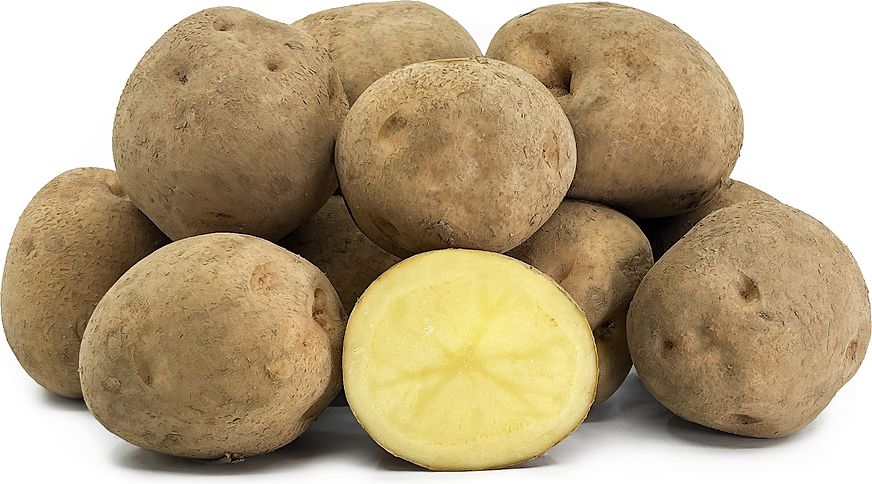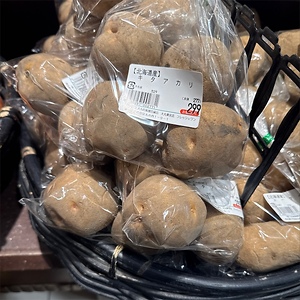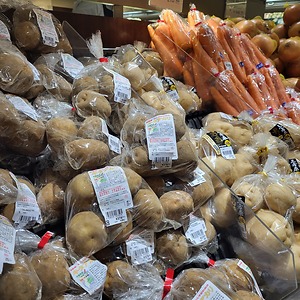


Kita Akari Potatoes
Estimated Inventory, lb : 0
Description/Taste
Kita Akari potatoes are round to oblong and medium in size, weighing around 5 ounces. Its outer skin is rough, dry, and flaky in texture and has brown, burlap-hued skin. The inner flesh is bright yellow and when cooked, has a soft, fluffy texture and a sweet taste.
Seasons/Availability
Kita Akari potatoes are available year-round, with peak season in the fall.
Current Facts
Kita Akari potatoes, botanically classified as Solanum tuberosum ‘Kita Akari,’ are categorized as a starchy potato. They are especially popular in Japan because they can quickly be prepared in a microwave oven and offer a distinct, sweet taste.
Nutritional Value
Kita Akari potatoes are rich in vitamin C and carotenoids, the naturally-occurring phytonutrients which have antioxidant, anti-inflammatory, and immune system benefits.
Applications
Kita Akari potatoes are most often enjoyed in cooked preparations. They make excellent mashed potatoes and can be boiled and used in potato salads. They are also popular in stews, soups and curry dishes. Kita Akari potatoes are notorious for losing their structure and disintegrating, so they should be cooked quickly and not overcooked. Store Kita Akari potatoes wrapped in a paper bag or cardboard box and keep them in a cool, dark, well-ventilated place.
Ethnic/Cultural Info
Until recently, the potato was thought of as a "Western" ingredient. It was not until the emergence of yoshoku, a field of Western-styled Japanese cuisine, that the use of the potato became widespread. Yoshoku dishes became extremely popular in the 1980s. Kita Akari potatoes are particularly well-suited for use in many classic yoshoku dishes, such as potato salads and potato croquettes.
Geography/History
Kita Akari potatoes are a Japanese hybrid found only in Japan. A relatively new breed introduced in 1987, they were developed by the Japanese Danshaku potato and the Japanese Tsunika potato. Cultivation of the potato as a food source in Japan only began in 1706 during a time of political uncertainty, as the potato was seen as a good source of nutrients in lean times. Today, Kita Akari potatoes are grown mostly in the northern island of Hokkaido, also known as the “potato kingdom of Japan,” and around 80% of Japan’s potato production occurs there.










